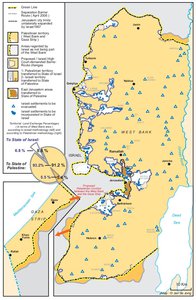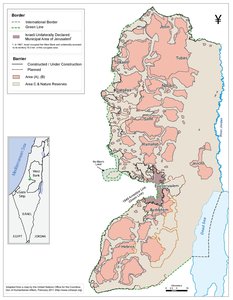Area C
Map Details
The Israeli-Palestinian Interim Agreement on the West Bank and the Gaza Strip (Oslo II), signed on 28 September 1995, created - as an interim, five-year measure - three distinct zones in the West Bank: Areas A, B, and C - each with different security and administrative arrangements: • Area A: full Palestinian control; mainly urban areas (cities & towns, such as Hebron, Ramallah, Nablus, Tulkarem, and Qalqilya): PA police patrol the streets. • Area B: Palestinian civil and Israeli security control; mainly villages on the outskirts of Area A cities. • Area C: full Israeli military and civil control; includes settlements, roads, strategic areas, areas adjacent to Israel proper. Area C is home to 150,000 Palestinians in over 500 communities and to some 325,000 Israeli settlers in over 200 settlements and outposts. It holds 63% of the West Bank’s most fertile and resource-rich lands and almost all of the Jordan Valley, which contains the largest (uninhabited) land reserves of the West Bank and much of its natural resources. The Oslo Accords mainly aimed to gradually transfer Area B and Area C from Israeli to Palestinian control (Area A). However, since 1999, none of the land in Area C has been transferred to the PA, and the entire West Bank remains occupied territory with Areas A (17.2% of the West Bank) and B (23.8%) consisting of 227 non-contiguous enclaves, cut off from one another as well as from their land and other resources. Approximately 40% of Area C is privately owned Palestinian land on which illegal settlements have been built. Israel retains full control over building and planning in Area C, leaving 70% of it (about 44% of the West Bank) classified as settlement areas, firing zones, or nature reserves and thus off limits to Palestinians. In the remaining 30% construction is heavily restricted, with less than 1% eligible for Palestinian development, of which a large portion is already built-up. Israeli goals in Area C are clear cut: to drive out as many Palestinians as possible by making their lives so unbearable that they will seek a better livelihood in Areas A or B. On average, 500-600 Palestinian structures (shelters, water infrastructure, schools, clinics, storages and animal shacks) are destroyed annually in Area C, while the Israeli authorities are denying building permits for Palestinians. As a result any form of local socioeconomic development is severely hampered and thousands of Palestinians are at immediate risk of displacement. With the exception of those located in East Jerusalem, all Israeli settlements are located in Area C; their actual municipal area comprises some 9.3% of the West Bank territory, but this figure grows to 40% if the settler road network and restrictions on Palestinian access to land are taken into consideration. The planned expansion area of the Area C settlements is nine times larger than their actual built-up area. In 2012, the settler population in Area C had more than tripled since Oslo, reaching 350,000 - more than double the Palestinian population of the area. Many of them live in remote areas and under substandard conditions with inadequate access to basic social services and assistance. However, Israel’s policies in Area C also impact Palestinians from other areas who own land in Area C, or Area B residents who are encircled by Area C, and, more generally, the entire West Bank population which face territorial interruption and severe restrictions on access and development. Many observers believe that Israel aims at an eventual annexation of Area C, with the remaining Palestinian population being possibly offered Israeli citizenship. The report of the government-appointed so-called Levy Committee, published in July 2012, recommended de facto annexation of more than half of the West Bank, concluding that Israel was neither an occupying power nor were the settlements illegal, and that outposts should be legalized. A recent poll conducted by Dialog, according to which a large majority of the Jewish public - 69% - objects to giving 2.5 million Palestinians the right to vote if Israel were to annex the West Bank, and 74% favor separate roads for Israelis and Palestinians in the West Bank. The survey indicates that a third to half of Jewish Israelis want to live in a state that practices formal, open discrimination against its Arab citizens. An even larger majority wants to live in an apartheid state if Israel annexes the territories.
Related Maps
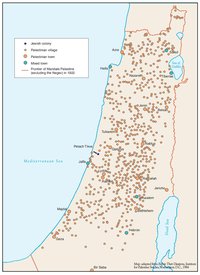
OTTOMAN PALESTINE, 1878
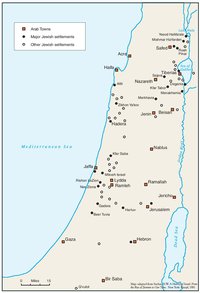
ARAB TOWNS AND JEWISH SETTLEMENTS IN PALESTINE, 1881-1914
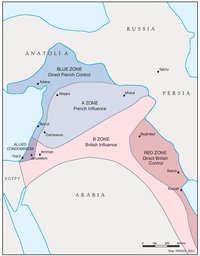
THE SYKES-PICOT AGREEMENT, 1916
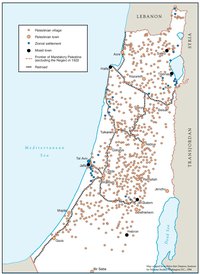
THE BEGINNING OF THE BRITISH MANDATE, 1920
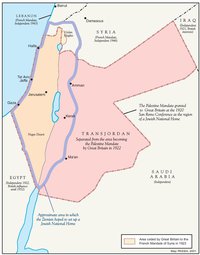
PALESTINE UNDER THE BRITISH MANDATE
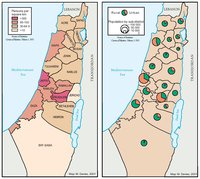
THE DEMOGRAPHY OF PALESTINE, 1931
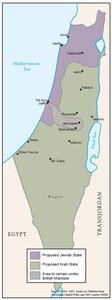
THE PEEL COMMISSION PARTITION PROPOSAL, 1937
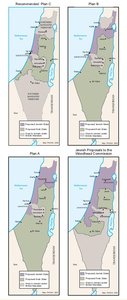
THE WOODHEAD COMMISSION PARTITION PROPOSALS, 1938
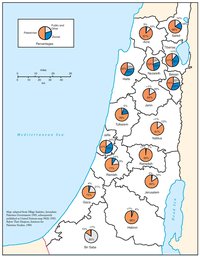
PALESTINIAN AND ZIONIST LANDOWNERSHIP BY SUB-DISTRICT, 1945
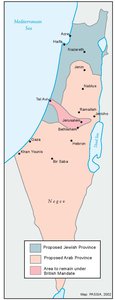
THE MORRISON-GRADY PARTITIONED TRUSTEESHIP PLAN, 1946
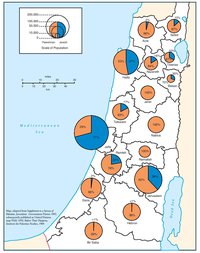
POPULATION OF PALESTINE BY SUB-DISTRICT, 1946
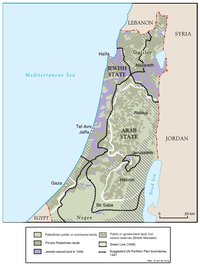
LAND OWNERSHIP IN PALESTINE, 1948
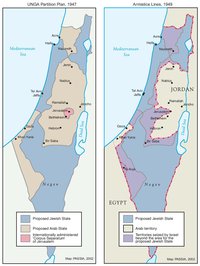
THE UNGA PARTITION PLAN, 1947 – THE 1948 WAR & THE 1949 ARMISTICE LINES
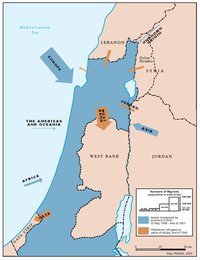
POPULATION MOVEMENTS, 1948-1951
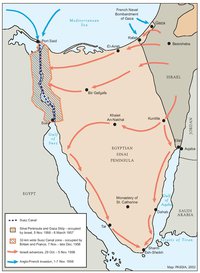
THE SUEZ WAR, 1956
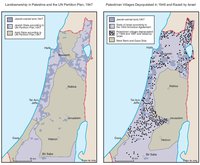
LAND OWNERSHIP IN PALESTINE AND THE UN PARTITION PLAN - PALESTINIAN DEPOPULATED AND DESTROYED VILLAGES, 1948-1949
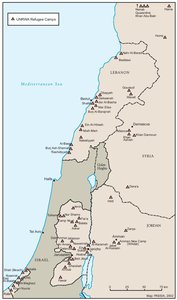
THE PALESTINIAN DIASPORA, 1958
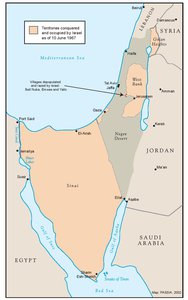
THE NEAR EAST AFTER THE JUNE 1967 WAR
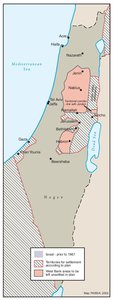
THE ALLON PLAN, JUNE 1967
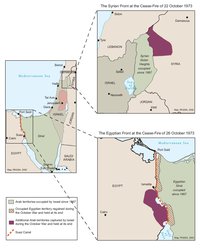
THE OCTOBER WAR, 1973
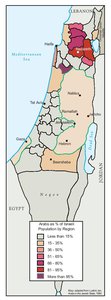
THE PALESTINIANS INSIDE ISRAEL, 1977
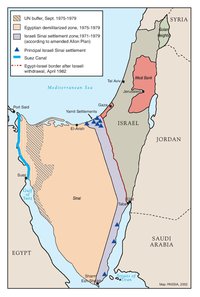
THE CAMP DAVID ACCORDS, 1978-1979
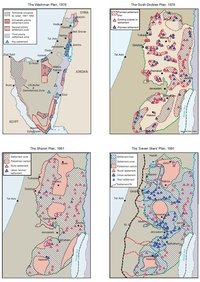
ISRAELI SETTLEMENT MASTER PLANS, 1976-1991
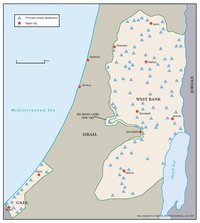
THE 1991 MADRID PEACE CONFERENCE & ISRAELI SETTLEMENTS
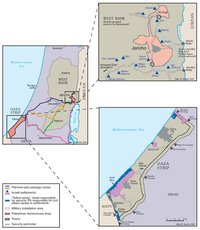
GAZA-JERICHO (OSLO I) AGREEMENT, CAIRO, 4 MAY 1994
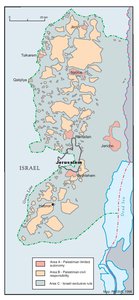
INTERIM (OSLO II) AGREEMENT, TABA, 28 SEPTEMBER 1995
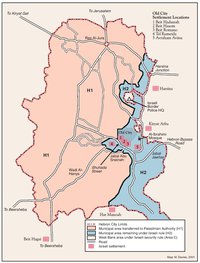
HEBRON PROTOCOL, 15 JANUARY 1997
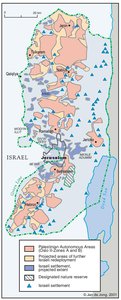
WYE RIVER MEMORANDUM, 23 OCTOBER 1998
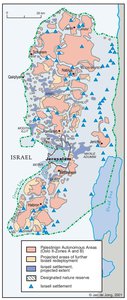
SHARM ESH-SHEIKH AGREEMENT, 4 SEPTEMBER 1999
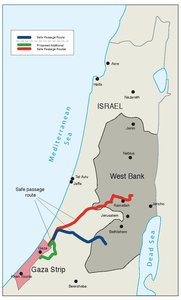
PROTOCOL CONCERNING SAFE PASSAGE BETWEEN THE WEST BANK AND THE GAZA STRIP, 5 OCTOBER 1999
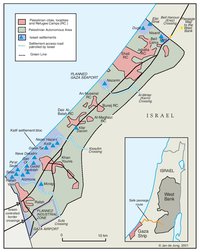
GAZA, 2000
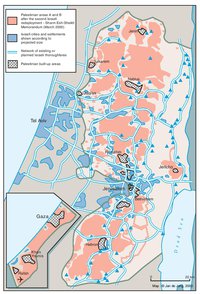
WEST BANK AND GAZA STRIP, MARCH 2000
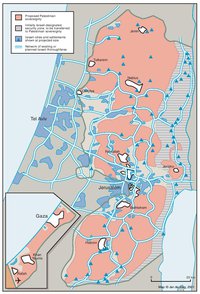
CAMP DAVID PROJECTION, JULY 2000
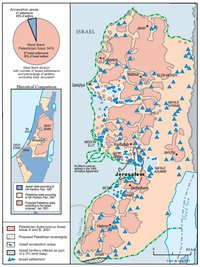
TABA TALKS PROJECTION, JANUARY 2001
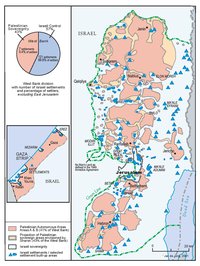
THE SHARON PROPOSAL, SPRING 2001
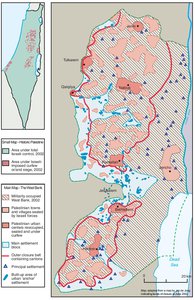
THE REINVASION OF THE PALESTINIAN TERRITORIES, 2001-2002
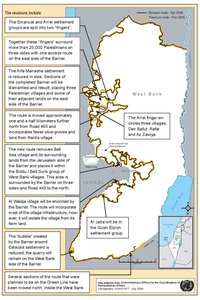
THE ROAD MAP, 2003
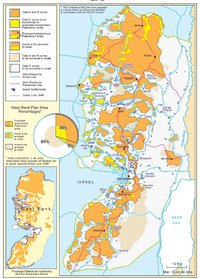
THE GENEVA INITIATIVE AND ACCORD, 2003
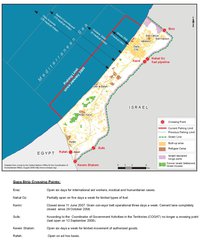
THE ISRAELI DISENGAGEMENT PLAN, 2003-2005
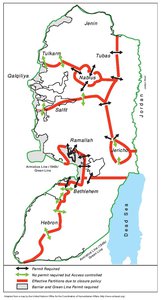
AGREED DOCUMENTS ON MOVEMENT AND ACCESS FROM AND TO GAZA, 2005
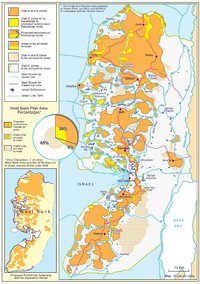
THE SETTLERS' PLAN FOR PALESTINIAN AUTONOMY, 2006
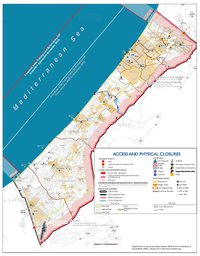
THE GAZA STRIP TODAY (2014)
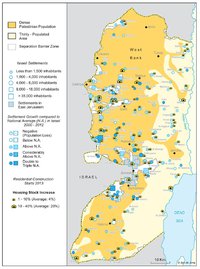
THE WEST BANK TODAY (2014)
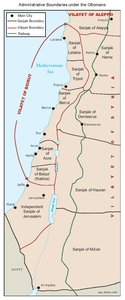
ADMINISTRATIVE BOUNDARIES
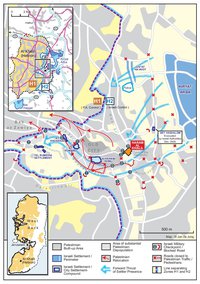
HEBRON
